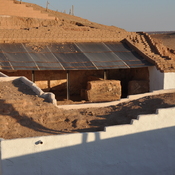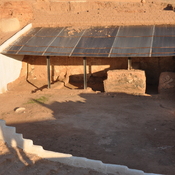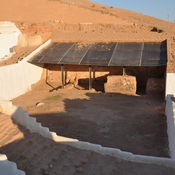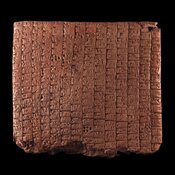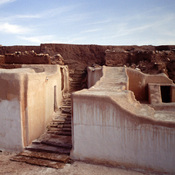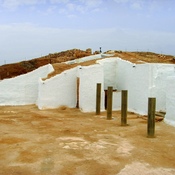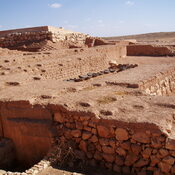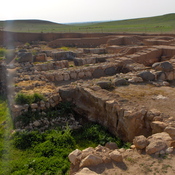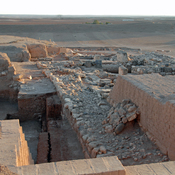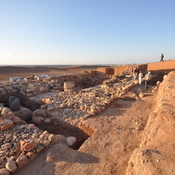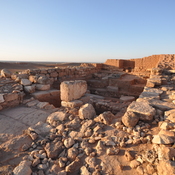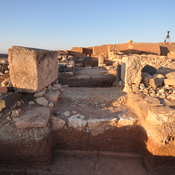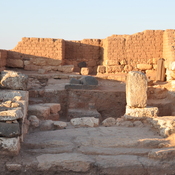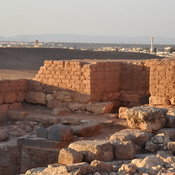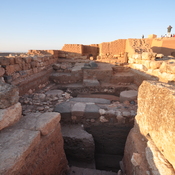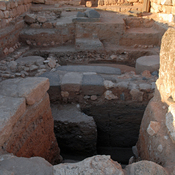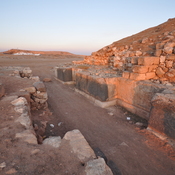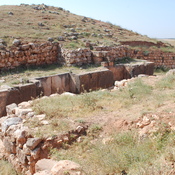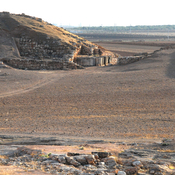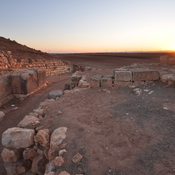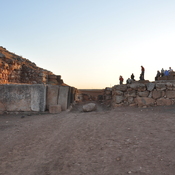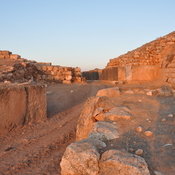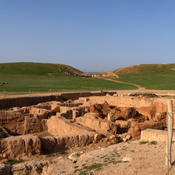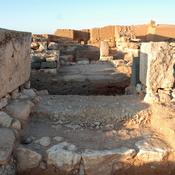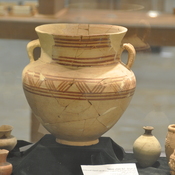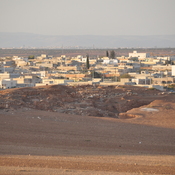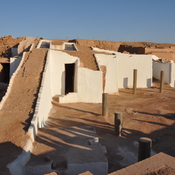Es gibt noch keine deutschsprachige Anmerkungen. Präsentiert wirden Anmerkungen auf English.
"The Lower Town West, in relation with the Western Palace, one second cult area stood, including Reshap’s Temple (Area B), the god of death, plague and of the Netherworld, and the Royal Deified Ancestors’ Temple. Rashap’s Temple had also one cella, and was oriented to the South, but the Sanctuary devoted to the cult for the deified royal ancestors had a central hall for communal meals, and some peripheral cellas with small altars, meant to host small cult statues, usually made of bronze covered with gold leaf, representing deceased kings ascended among the gods"1.
According to M. M. Münnich the identification of the temple as Reshep temple is unfounded2.
- Maciej M. Münnich (2013). The God Resheph in the Ancient Near East.
- Paolo Matthiae, http://www.ebla.it/escavi__i_templi_paleosiriani.html
Referenzen
- ↑Paolo Matthiae, http://www.ebla.it/escavi__i_templi_paleosiriani.html
- ↑M>M. Munich 2013, p. 64 ff
"The Lower Town West, in relation with the Western Palace, one second cult area stood, including Reshap’s Temple (Area B), the god of death, plague and of the Netherworld, and the Royal Deified Ancestors’ Temple. Rashap’s Temple had also one cella, and was oriented to the South, but the Sanctuary devoted to the cult for the deified royal ancestors had a central hall for communal meals, and some peripheral cellas with small altars, meant to host small cult statues, usually made of bronze covered with gold leaf, representing deceased kings ascended among the gods"1.
According to M. M. Münnich the identification of the temple as Reshep temple is unfounded2.
- Maciej M. Münnich (2013). The God Resheph in the Ancient Near East.
- Paolo Matthiae, http://www.ebla.it/escavi__i_templi_paleosiriani.html
Referenzen
- ↑Paolo Matthiae, http://www.ebla.it/escavi__i_templi_paleosiriani.html
- ↑M>M. Munich 2013, p. 64 ff

